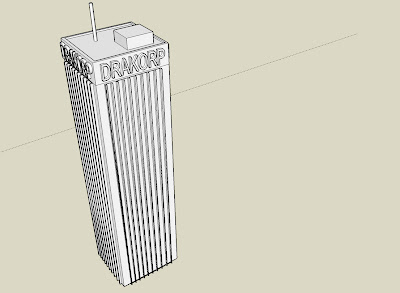 It’s a tribute to the artist’s enormous influence and talent that Noel Sickles, who worked exclusively as a cartoonist only from about 1933 to 1936, continues to be remembered and honored in the comics industry. Along with cartoonist Milton Caniff, creator of Terry and the Pirates and Steve Canyon, Sickles in his brief time in the industry is credited with creating and subsequently inspiring a whole new style of cartooning—often referred to as the “chiaroscuro school”—which used heavy blacks to create a sense of dramatic mood and atmosphere, as well as a documentary effect, on the comics page.
It’s a tribute to the artist’s enormous influence and talent that Noel Sickles, who worked exclusively as a cartoonist only from about 1933 to 1936, continues to be remembered and honored in the comics industry. Along with cartoonist Milton Caniff, creator of Terry and the Pirates and Steve Canyon, Sickles in his brief time in the industry is credited with creating and subsequently inspiring a whole new style of cartooning—often referred to as the “chiaroscuro school”—which used heavy blacks to create a sense of dramatic mood and atmosphere, as well as a documentary effect, on the comics page.Further cementing his legacy is a hefty, comprehensive, and beautifully designed oversized artbook devoted to the artist, Scorchy Smith and the Art of Noel Sickles, by Dean Mullaney. Reportedly begun as vehicle to reprint the artist’s full run on Scorchy Smith—an aviation/soldier of fortune daily adventure comic strip inspired by Charles Lindbergh—the labor of love soon evolved into a serious retrospective into the artist’s life and career.
 While Sickles would regardless always have been remembered for his pioneering work, his place in comics history was partly ensured by Caniff (who I’ve blogged and written about extensively: see here and here). Both from Ohio, the two young men met at the start of their careers at the Ohio Dispatch newspaper art bullpen (both attended Ohio State simultaneously for a time) and soon became close personal friends as well as studio mates. Caniff was a skilled networker and self-promoter, but generous as well. Indeed, in the midst of the Depression, it was Caniff who found Sickles a job at the Associated Press shortly after he had been hired there, which eventually led to Sickles’ assignment on Scorchy Smith. But Caniff never hesitated to credit Sickles for inventing the style that Caniff subsequently picked up, developed further and turned into his signature style.
While Sickles would regardless always have been remembered for his pioneering work, his place in comics history was partly ensured by Caniff (who I’ve blogged and written about extensively: see here and here). Both from Ohio, the two young men met at the start of their careers at the Ohio Dispatch newspaper art bullpen (both attended Ohio State simultaneously for a time) and soon became close personal friends as well as studio mates. Caniff was a skilled networker and self-promoter, but generous as well. Indeed, in the midst of the Depression, it was Caniff who found Sickles a job at the Associated Press shortly after he had been hired there, which eventually led to Sickles’ assignment on Scorchy Smith. But Caniff never hesitated to credit Sickles for inventing the style that Caniff subsequently picked up, developed further and turned into his signature style. Sickles partly developed the style to speed up production on Scorchy Smith since it allowed him to slap down blacks very quickly. But he also did so out of boredom and experimentation. Like another Sickles/Caniff disciple, Alex Toth, Sickles was notoriously restless, as well as incredibly versatile. (Like Toth, Sickles was an "artist's artist.") Storywriting Smith never really held much interest for him; Caniff often scripted the strip in advance for him while Sickles occasionally lent a hand on his studio partner’s strips. But even in his short time on his strip, you can see Sickles using a whole range of styles, from the chiaroscuro look to one with heavy cross hatching.
Sickles partly developed the style to speed up production on Scorchy Smith since it allowed him to slap down blacks very quickly. But he also did so out of boredom and experimentation. Like another Sickles/Caniff disciple, Alex Toth, Sickles was notoriously restless, as well as incredibly versatile. (Like Toth, Sickles was an "artist's artist.") Storywriting Smith never really held much interest for him; Caniff often scripted the strip in advance for him while Sickles occasionally lent a hand on his studio partner’s strips. But even in his short time on his strip, you can see Sickles using a whole range of styles, from the chiaroscuro look to one with heavy cross hatching.Given this restlessness, it seemed inevitable that Sickles would move on. And indeed he did, becoming a successful and respected commercial illustrator, which Mullaney’s book covers comprehensively. Sickles’ cartooning background, however, clearly continued to serve him well. A review of his work in the new biography shows that his art never looked artificial or labored, but rather incredibly spontaneous and naturalistic. And each piece always told a story—indeed, most of his work seemed to be for fiction pieces or were presented as reportage, rather than classic commercial illustration.
Credits: Many of the images featured here from Scorchy Smith and the Art of Noel Sickles are from commercial artist Leif Peng’s “Today’s Inspiration” blog. Leif has posted extensive samples of Sickles’s work featured in the book here.










